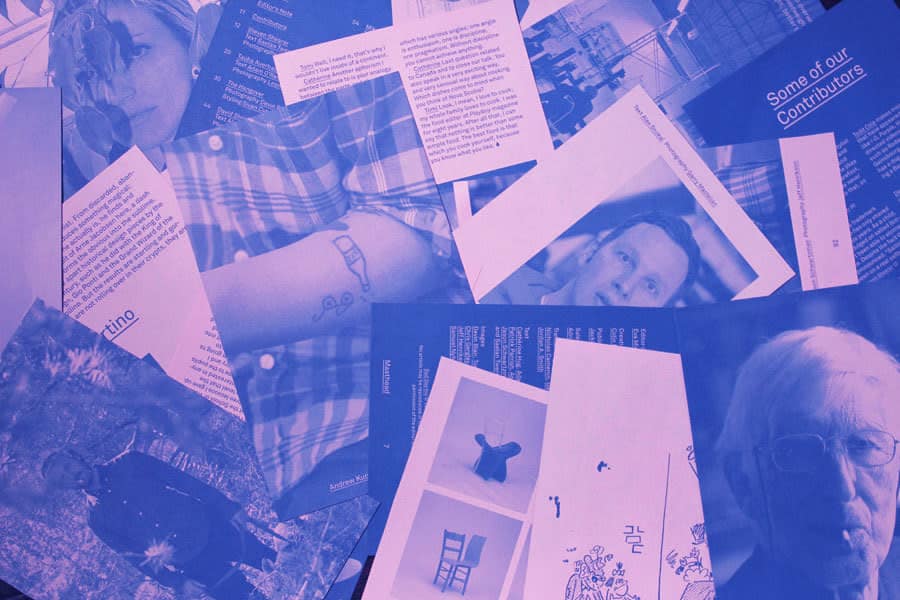Como cofundador e editor da revista de grande sucesso Revista Bad DayCom o lançamento da revista "The New York Times", Jackie Linton (juntamente com a editora Eva Michon e o diretor de arte Colin Bergh) lançou oficialmente vinte edições impressas. Isso não é apenas uma grande conquista para qualquer publicação cultural independente, mas o trio consegue realizar o trabalho sem o financiamento de investidores. Eles também têm empregos diários e trabalham juntos, apesar de estarem em cidades diferentes.
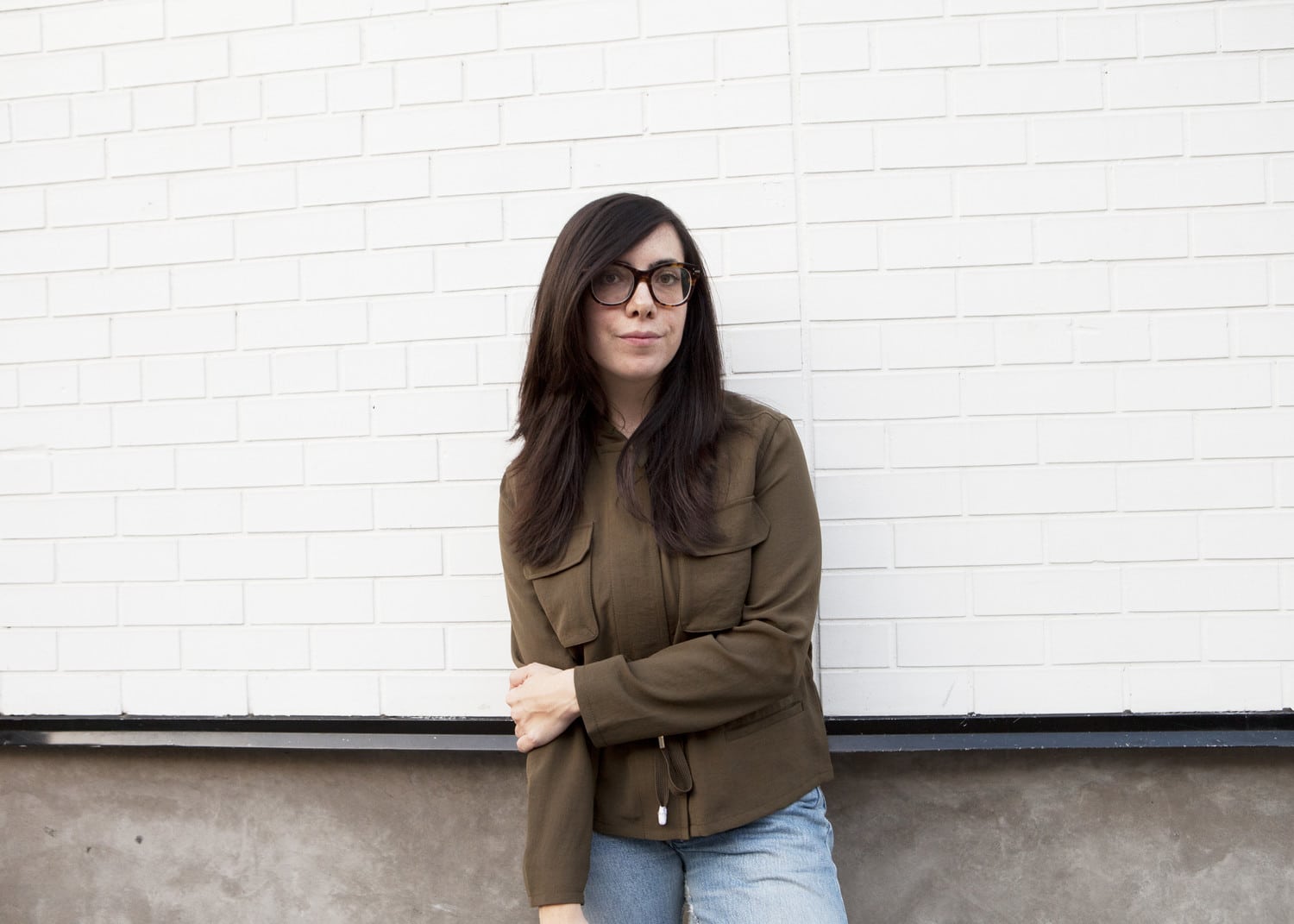
Começando como um zine que era impresso e grampeado em um espaço administrado por artistas no centro de Toronto, a revista semestral Dia ruim agora está disponível nas principais cidades do mundo e recentemente abriu outro escritório em Nova York. Enquanto a maioria das revistas está ficando maior, mais gorda e mais brilhante, com menos texto e mais imagens, Dia ruim é conhecida por sua estética lo-fi, impressão em dois tons exclusiva e foco em entrevistas mais longas, mais sinceras e com estilo de conversa.
Graças a você Dia ruimcom a determinação implacável, o espírito de equipe e o amor pelas listas, eles conseguiram entrevistas com algumas das mentes mais importantes da contracultura, incluindo Joanna Newsom, Harmony Korine, Sofia Coppola e Jason Schwartzman - tudo sem a ajuda de patrocinadores ou anunciantes.
Conversamos com Jackie Linton para saber como ela e a equipe conseguem criar uma publicação regular que é empolgante, sustentável e muito aguardada, ano após ano.
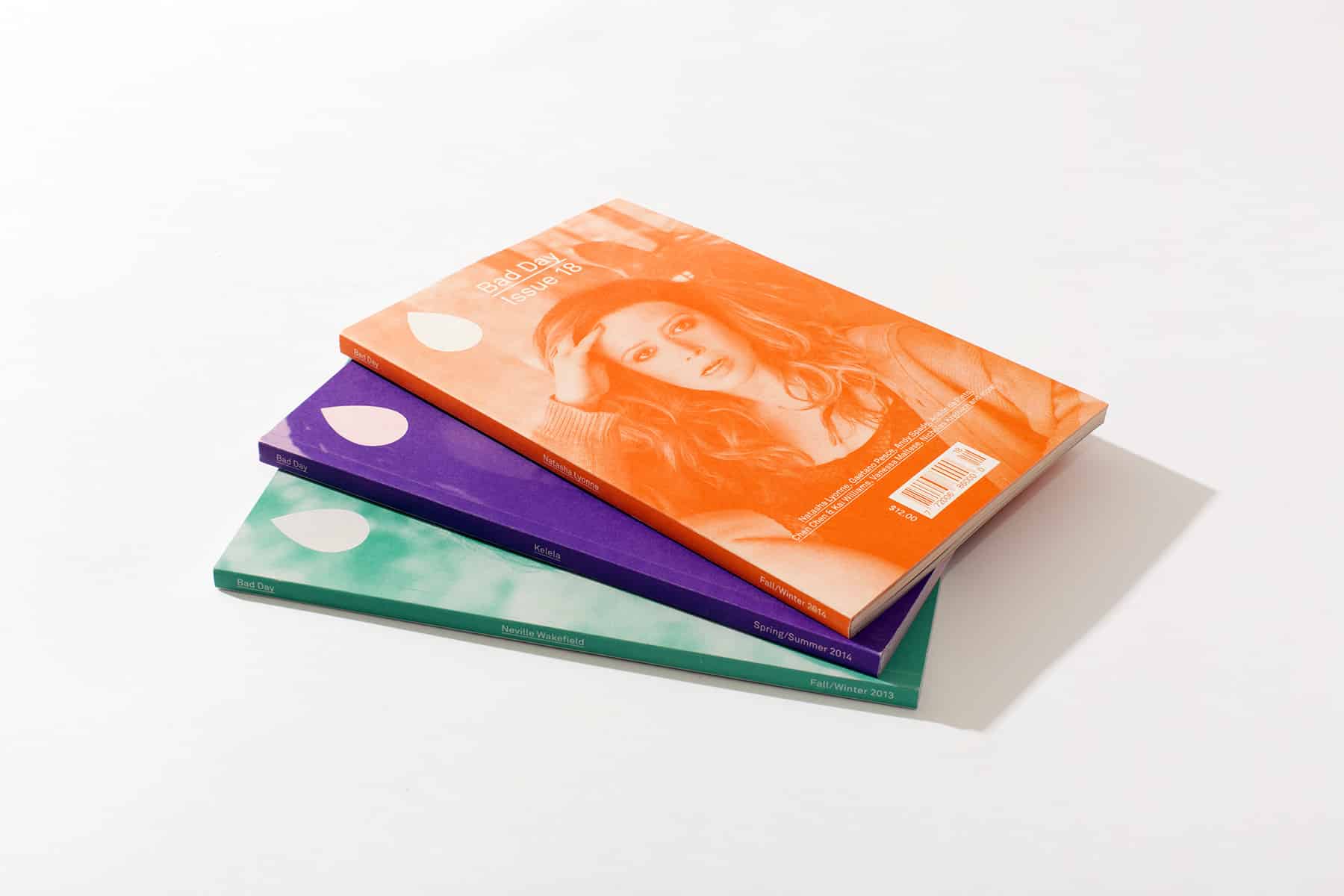
Sinto-me atraído por qualquer pessoa que consiga ganhar a vida fazendo algo significativo e "criativo", seja para fins comerciais ou puramente para fins artísticos, seja lá o que isso signifique.
Format: Como você equilibra seu trabalho diário como redatora em São Francisco com sua função de editora na Dia ruim? O que realmente estamos perguntando é: como você tem tempo para fazer tantas coisas - e fazê-las tão bem?
Jackie Linton: É claro que nem sempre é fácil administrar. E com um trabalho diário, tenho que equilibrar as prioridades. Tenho que equilibrar as metas que quero alcançar em minha carreira com as metas que tenho para você. Dia ruime como eu gostaria que a revista crescesse ou fosse bem-sucedida.
Sempre há uma tonelada de coisas que estou atrasando - e-mails e coisas que preciso fazer. Quando seu projeto de paixão não é sua vocação, sempre haverá essa tensão. Temos a sorte de que Dia ruim já cresceu o suficiente. Sinto-me como se estivesse falando de uma criança, mas a revista já foi construída o suficiente para que, como negócio, eu não precise agitá-la tanto quanto costumava fazer quando começamos.
Trabalhamos com fornecedores comerciais. As pessoas nos reconhecem e tendem a responder aos meus e-mails com mais frequência. Depois que você atinge a marca de cinco anos com um projeto de impressão, as coisas devem ficar mais fáceis, e elas meio que ficam. Portanto, a partir daí, você só precisa reservar um tempo. E você precisa se preocupar de verdade. Mantenha listas detalhadas. É incrível o que você pode fazer em seu tempo livre.
O que significa para você ser editor de uma revista independente?
Para mim, um editor está muito envolvido em todos os aspectos de um projeto impresso - desde sua produção, circulação nas lojas, páginas de publicidade e esforços de marketing, bem como suas preocupações editoriais e criativas. Mas, em última análise, ser um editor significa que você está concentrado em trazer dinheiro e conscientização para a sua revista. Acho que essa função para mim permaneceu a mesma ao longo dos anos.
Como você começa uma edição e decide quem vai apresentar?
Cada um de nós terá uma lista de ideias que gostaria de ver na próxima edição. E, para ser sincero, nós meio que debatemos isso. Queremos ter certeza de que estamos refletindo uma lista bem variada de criativos de diferentes origens. E acabamos com uma lista restrita de recursos que melhor refletiriam uma grande edição da Dia ruim para nós.
Você tem uma lista considerável de colaboradores e contribuintes. Você procura escritores e fotógrafos ou é bombardeado com ofertas de pessoas? Como você escolhe com quem trabalhar?
Nós mesmos procuramos colaboradores, porque Dia ruim serve como uma oportunidade para trabalharmos com pessoas criativas que realmente admiramos. Mas recebemos propostas e portfólios de novas pessoas com frequência, e levamos isso a sério e, às vezes, os levamos adiante! Portanto, se você quiser ser publicado na Bad Day, basta Envie-nos um e-mail.
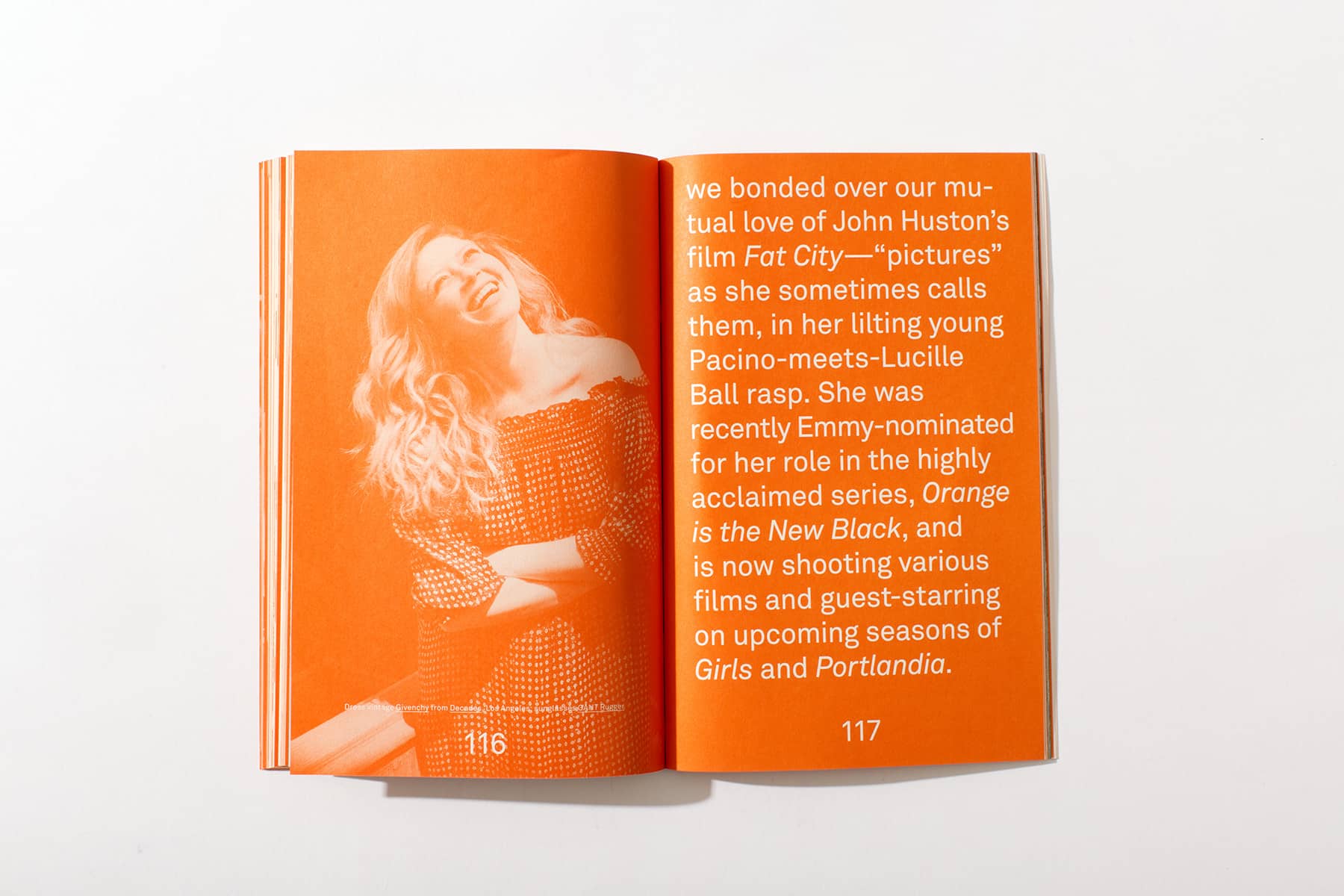
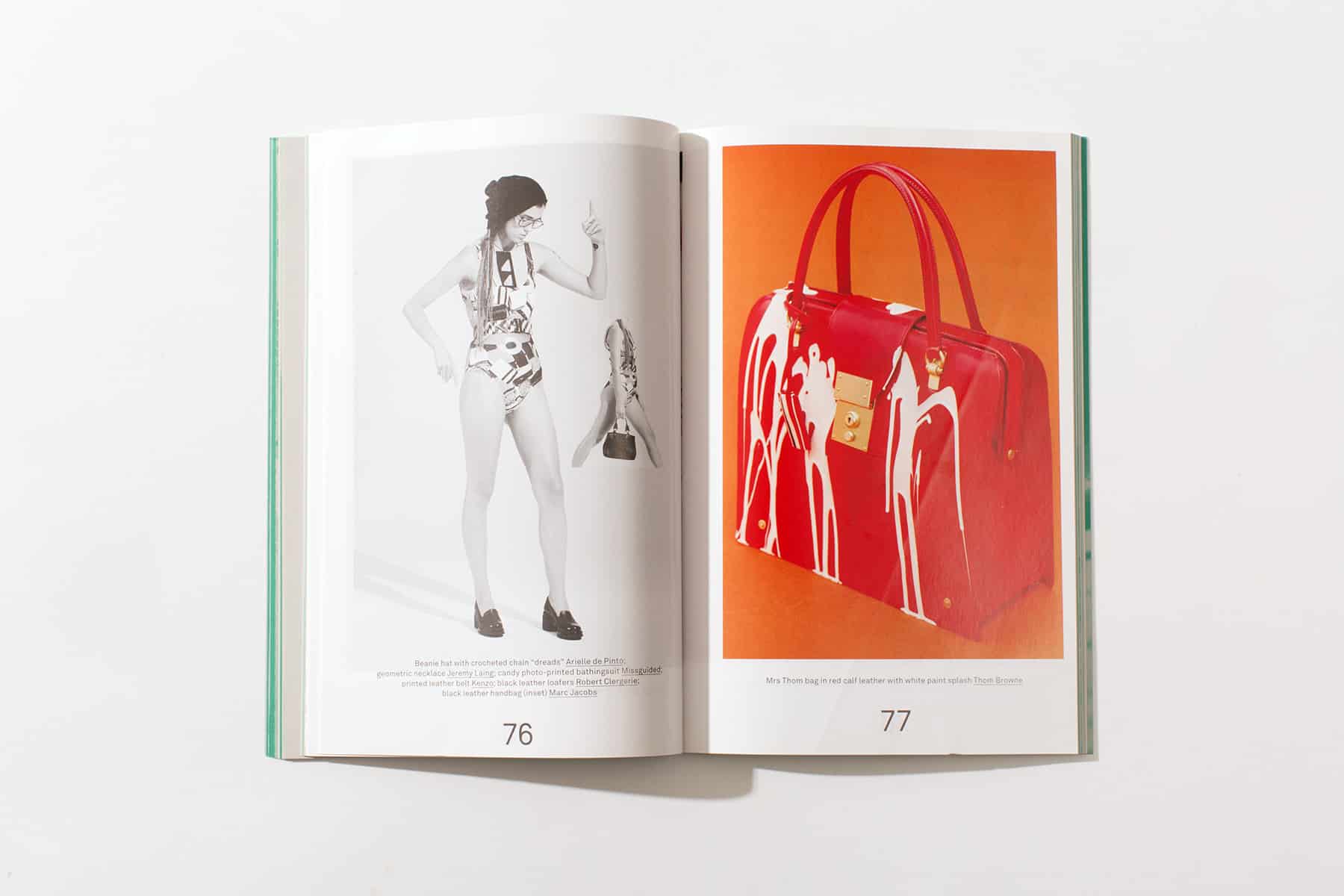
Vocês três estão em locais diferentes. Como você faz isso funcionar?
Vivemos em cidades diferentes por quase cinco anos, por isso estamos acostumados a trabalhar de forma deslocada. Muito do trabalho de uma revista pode ser feito principalmente por e-mail e telefone. Contamos com o Google: documentos compartilhados, e-mail e Hangouts.
A revista continuaria se a equipe se dissolvesse?
No momento, sim. Dia ruim é intrinsecamente um reflexo de Colin, Eva e eu, e de como conseguimos fazer as coisas funcionarem. Começamos a revista como bons amigos, que se conheciam há muito tempo, e todos nós tínhamos interesses semelhantes em comum. Esses interesses foram encapsulados em Dia ruim. Acho que a revista certamente poderia continuar, e acho que ela tem vida e potencial para continuar sem nós três trabalhando nela juntos, mas acho que seria uma mudança radical, marcaria uma nova era para a Dia ruim. A revista seria definitivamente diferente.
Como você acha que o Bad Day mudou ao longo de 20 edições?
Mantivemos uma consistência um tanto rígida na aparência da revista ao longo dos anos, mas uma mudança seria o papel cada vez maior que os editoriais de moda têm desempenhado na Dia ruim. Foi algo que começamos inicialmente como uma adição visual divertida às nossas edições e, desde então, elas se tornaram realmente centrais para o projeto. Parte disso veio de Avena GallagherVocê pode se sentir à vontade para falar com o nosso Diretor de Moda, que traz uma estética incrível para a revista.
Quais são os desafios que você enfrenta com a expansão da revista e dos negócios?
Há certas decisões que tomamos que funcionam melhor para nós, mas depois temos que justificá-las do ponto de vista comercial. Por exemplo, um anunciante pode querer saber quais são os nossos seguidores no Snapchat - e nós não temos o Snapchat. O que podemos oferecer em vez disso para demonstrar qualidade e capacidade de alcançar as pessoas de forma significativa, apesar de nossa decisão de evitar o Snapchat?
Também notamos que o apoio à publicação independente continua se expandindo - parece que há meia dúzia de novas feiras de livros de arte que surgiram recentemente. O que é muito positivo para a comunidade. Mas é difícil manter o ritmo!
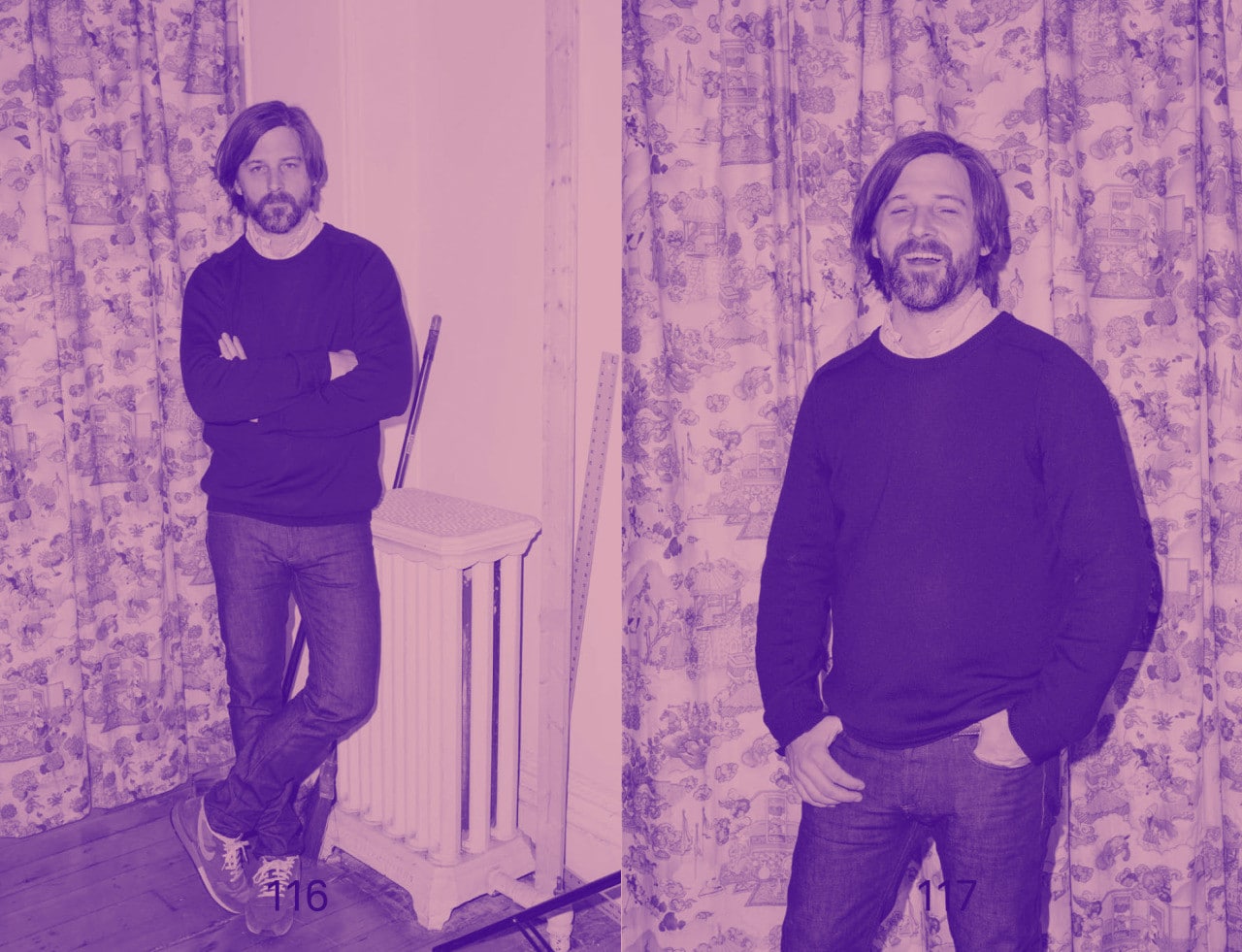
Roe Ethridge fotografada por Jeremy Liebman para a Bad Day
Já vi pessoas pegarem a revista, segurarem-na nas mãos e dizerem: "Nossa! Estou obcecado por isso!
Sua declaração de missão diz que você deseja apresentar pessoas de todas as disciplinas criativas, de designers de perfumes a artistas de esculturas, e que está procurando romper as fronteiras ou hierarquias que existem entre as profissões criativas. Essa ainda é a missão de vocês? Dia ruimVocê tem uma filosofia editorial que evoluiu com o tempo?
Isso ainda é algo que nos interessa. Pessoalmente, sinto-me atraído por qualquer pessoa que consiga ganhar a vida fazendo algo significativo e "criativo", seja para fins comerciais ou puramente pela arte, seja lá o que isso signifique.
Que parte você faz? Seu site você pode jogar na revista impressa?
Muito pouco. O mínimo possível. Basicamente, queríamos torná-lo um cartão de visitas para cada nova edição - um lugar onde você pode saber mais sobre a revista e talvez até comprar um exemplar. Nosso conteúdo ainda está muito restrito à revista impressa, pois é nela que queremos dedicar nosso tempo e energia.
Quais são os principais desafios de fazer uma publicação impressa em comparação com a digital? Quais são os benefícios de trabalhar com impressão?
Os principais desafios de fazer uma publicação impressa de qualidade e um produto digital de qualidade são provavelmente os mesmos. Há uma série de custos e esforços de produção necessários para que valha a pena e, depois, você precisa atrair a atenção das pessoas. O problema com a impressão é que, devido à sua fisicalidade, só consigo fazer com que um número limitado de pessoas se interesse por nossas edições impressas. Há um número limitado de cópias disponíveis.
No entanto, com a impressão, não é tão fácil ser considerado garantido. Não é tão fácil para as pessoas se cansarem - estamos no mercado desde 2009 e não há muitos sites que eu possa dizer que ainda sejam interessantes para mim depois de sete anos de funcionamento. As pessoas colocam nossas revistas em exposição em suas casas. As pessoas geralmente descrevem Dia ruim como "íntimo". Já vi pessoas pegarem a revista, segurarem-na nas mãos e dizerem: "Uau! Estou obcecado por isso!" E é mais difícil fazer esse tipo de apelo com o digital.
Você faria a publicação com mais frequência?
Não. Inicialmente, começamos Dia ruim como uma revista trimestral, mas o ciclo de produção era demais para nós. De qualquer forma, acho que um ciclo semestral para revistas é muito melhor: passa tempo suficiente para que as pessoas antecipem a próxima edição.
Você tem algum conselho para quem quer começar sua própria revista ou para quem está tendo problemas para continuar seu projeto criativo?
Eu evitaria papel pesado e brilhante. Ele custa muito mais dinheiro para ser impresso e enviado. Se você estiver começando ou tiver problemas, eu tentaria entrar em contato com as pessoas da comunidade e começaria a formular um plano sobre como abrir caminho de forma inteligente. É provável que você consiga uma combinação de sugestões de outras pessoas e de sua própria criatividade, que funcionará melhor para o seu projeto. O segredo é que você tenha essas duas coisas, em quantidades iguais.
Obtenha sua própria cópia da Bad Day Magazine aqui e visite o portfólio de Jackie Linton em jackelinton.com.
Imagem via The Gorgeous Daily/Imagem de perfil via Funcionando Não funcionando
